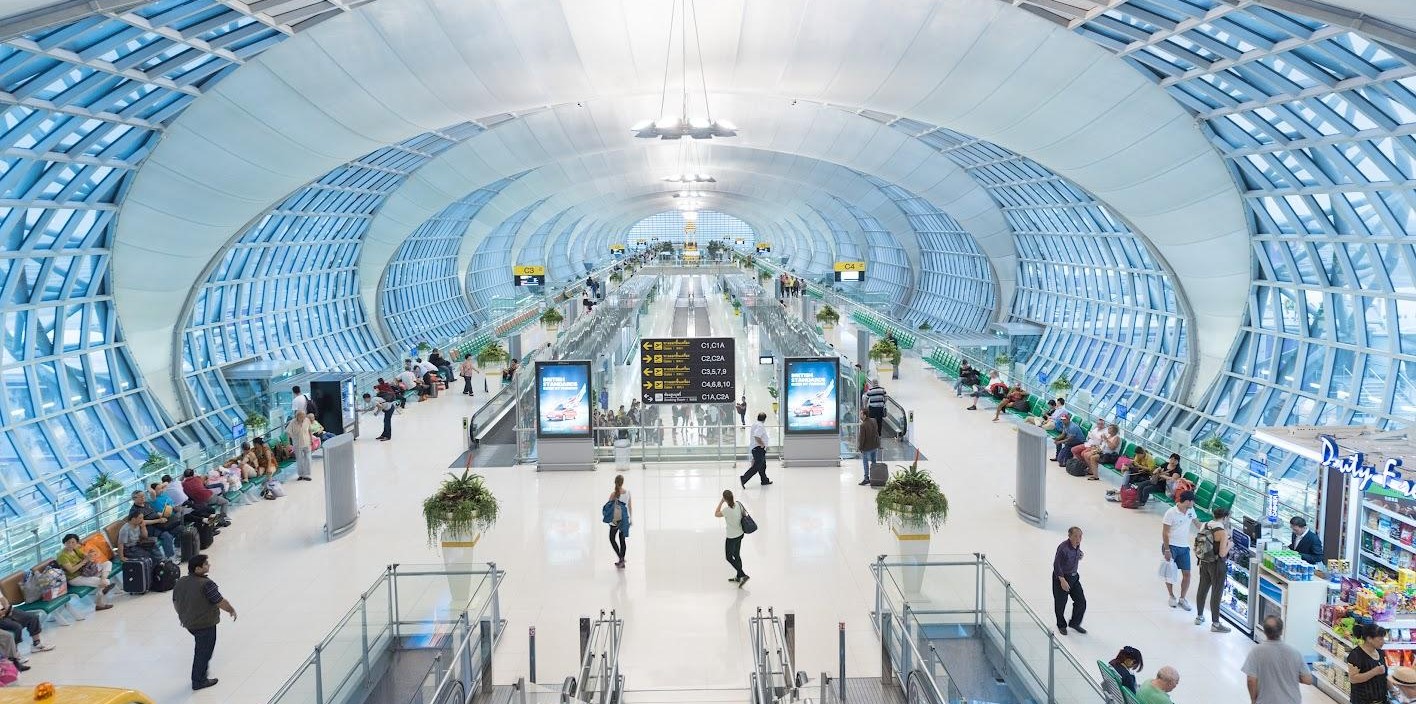The final month of 2024 was a good one for the region’s key airports. How did KLIA stack up against the best performers in ASEAN?
In December 2024, Southeast Asia’s aviation market experienced notable growth, driven by increasing international travel demand and airline network expansions. Key airports in the region reported significant gains in seat capacity, reflecting a resurgence in tourism and the development of new travel hubs. This growth further cements Southeast Asia’s reputation as a vibrant destination and global aviation hub, catering to both leisure and business travellers.
Anyone who’s watched Thailand’s dominance in the travel and tourism sector won’t be surprised at who’s in the number-one spot, but Kuala Lumpur International Airport was a solid performer, too.
With data collected, analyzed, and reported by Cirium and Aviation A2Z, the ranking is assembled by the raw numbers of seat capacity added in December, rather than by percentage growth. (If going by the latter metric, Vietnam’s Phu Quoc International Airport was the runaway leader, with a stunning 176% increase in seats.)
FASTEST-GROWING AIRPORTS IN SOUTHEAST ASIA
1. Bangkok Suvarnabhumi International Airport (BKK), Thailand

Seats Added: 394,577
Percentage Increase: 16%
Bangkok’s Suvarnabhumi Airport led the region with a 16% increase in seat capacity, showcasing Thailand’s robust tourism recovery. The airport’s success is bolstered by its high-frequency connections on key international routes.
2. Singapore Changi Airport (SIN), Singapore

Seats Added: 326,712
Percentage Increase: 10%
Singapore’s Changi Airport continues to dominate as a major hub, adding over 326,000 seats compared to 2023. Its strategic importance as a transit point fuels its steady recovery in both leisure and business travel.
3. Kuala Lumpur International Airport (KUL), Malaysia

Seats Added: 240,206
Percentage Increase: 11%
Kuala Lumpur International Airport recorded an 11% growth, adding more than 240,000 seats. The rise highlights Malaysia’s growing role as a regional aviation hub, especially for traffic from neighbouring countries and the Middle East.
4. Bangkok Don Mueang International Airport (DMK), Thailand

Seats Added: 227,580
Percentage Increase: 39%
Don Mueang’s remarkable 39% increase reflects the growing popularity of low-cost carriers and short-haul travel within Southeast Asia, solidifying its role as a key budget airline hub.
5. Phuket International Airport (HKT), Thailand

Seats Added: 159,924
Percentage Increase: 31%
Phuket’s impressive 31% capacity rise underscores its status as a gateway to Thailand’s southern tourism hotspots, driven by strong demand from European and Asian travellers.
6. Denpasar-Bali International Airport (DPS), Indonesia

Seats Added: 104,203
Percentage Increase: 16%
Bali’s Denpasar Airport saw a 16% growth in international seats, supported by Indonesia’s tourism revival. Bali remains a top choice for travellers from Australia, China, and Europe.
7. Noi Bai International Airport (HAN), Hanoi, Vietnam

Seats Added: 95,702
Percentage Increase: 15%
Hanoi’s Noi Bai Airport added nearly 96,000 seats, driven by Vietnam’s increasing tourism profile and enhanced connectivity to Asian markets.
8. Phu Quoc International Airport (PQC), Vietnam
Seats Added: 91,262
Percentage Increase: 176%
Phu Quoc Airport posted an astounding 176% increase in capacity, propelled by new routes and its rising appeal as a tropical island destination.
9. Manila Ninoy Aquino International Airport (MNL), Philippines

Seats Added: 73,493
Percentage Increase: 6%
Manila Airport recorded modest growth, attributed to strengthened tourism and improved connections to North Asia and the Middle East.
10. Soekarno-Hatta International Airport (CGK), Jakarta, Indonesia

Seats Added: 62,346
Percentage Increase: 7%
Jakarta’s Soekarno-Hatta Airport grew by 7%, reflecting improved business travel and a gradual return of international tourists.
KEY OBSERVATIONS: WHAT’S DRIVING THE GROWTH
Thailand stands out as the clear leader in Southeast Asia’s aviation recovery, with three airports—Suvarnabhumi, Don Mueang, and Phuket—ranking among the region’s fastest-growing. This growth reflects Thailand’s enduring appeal as a global holiday destination and the pivotal role played by its low-cost carrier network. The country’s ability to attract both long-haul and regional travellers underscores its resilience and strategic importance in the aviation market. Meanwhile, established hubs like Singapore’s Changi Airport and Kuala Lumpur International continue to thrive as transit and regional connection points, cementing their status as key players in the region’s aviation ecosystem.
Secondary markets, such as Phu Quoc in Vietnam, have also shown extraordinary growth, with the island achieving a 176% increase in seat capacity. This trend highlights the rising appeal of emerging destinations, as airlines introduce new routes to cater to evolving traveller preferences. Similarly, airports in Bali and Hanoi are benefiting from the resurgence of leisure and business travel, demonstrating the role of tourism-centric airports in driving the sector’s overall recovery.
As Southeast Asia’s aviation market looks ahead to 2025, the region is well-positioned for continued progress. Established hubs and emerging destinations alike are helping to sustain growth, aided by expanded airline networks and increased demand for both tourism and business travel. The diversification of travel destinations, combined with the resilience of major transit hubs, signals a promising trajectory for the region’s aviation sector.
"ExpatGo welcomes and encourages comments, input, and divergent opinions. However, we kindly request that you use suitable language in your comments, and refrain from any sort of personal attack, hate speech, or disparaging rhetoric. Comments not in line with this are subject to removal from the site. "





















